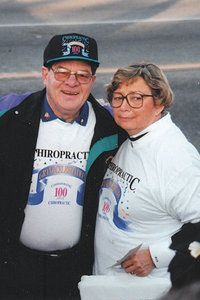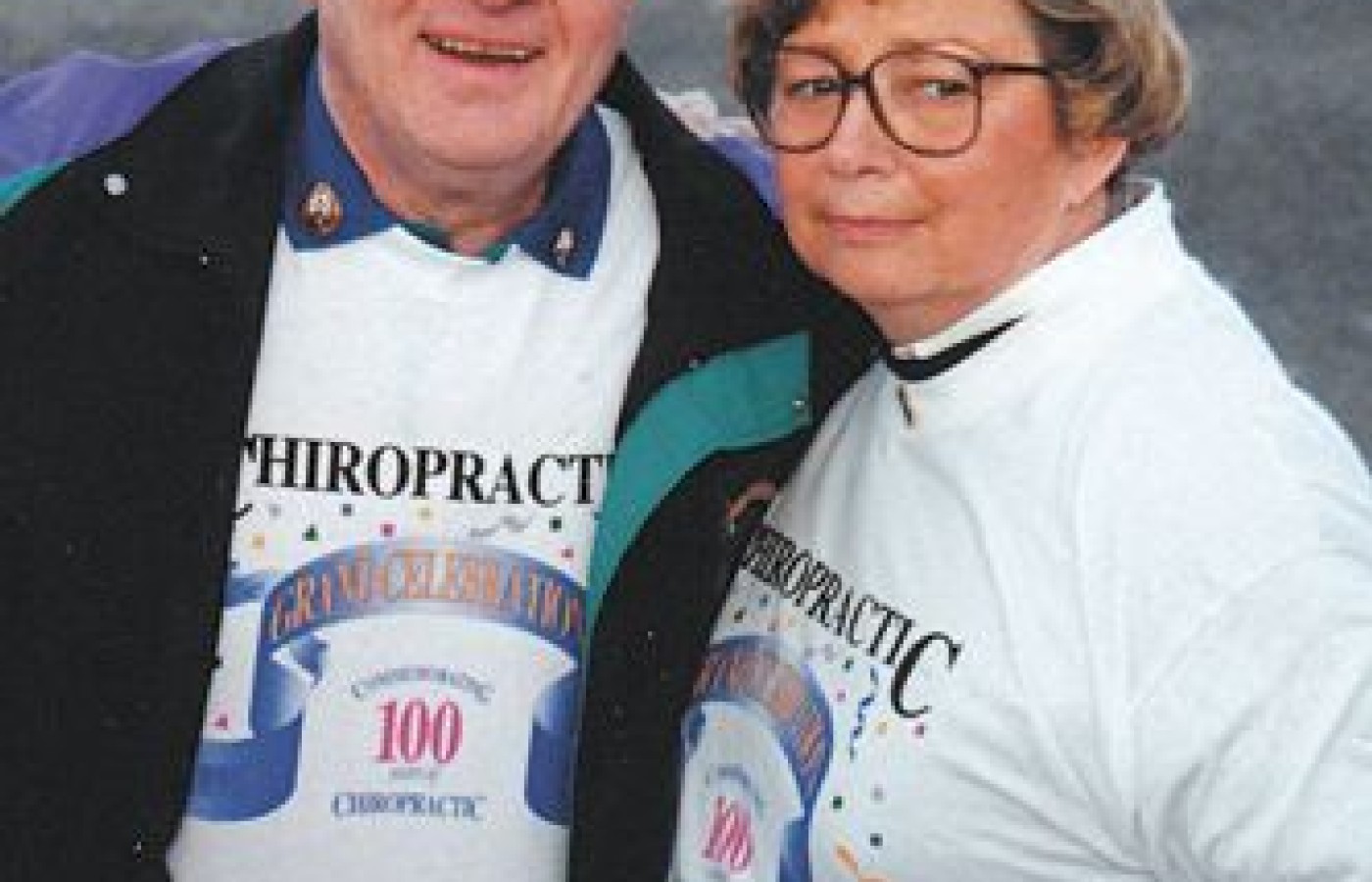It is estimated that 61% of patients with CTS avoid taking surgical options due to postoperative complications and costly surgical procedures. Chiropractic care offers a comprehensive and effective treatment for carpal tunnel syndrome, addressing the condition from multiple angles. Recent studies also have unveiled a game-changing adjunct to chiropractic treatments for CTS: nerve flossing.
A Tribute to William Holmberg (1931-2013)
Born in Alabama, William Holmberg decided he wanted to become a chiropractor at the age of 10. He attended the University of Alabama and spent two years in the U.S. Army before enrolling at the Palmer School of Chiropractic, graduating in 1955. His bride, Barb, a woman of great charm, influenced him to stay in the area, as she was a local girl. In return, she attended hundreds of ceremonial dinners and cooked almost as many for Palmer students. Together they raised two daughters, Kris and Teresa.
Bill Holmberg should not be remembered in the context of dates, titles and awards, although there were many. Bill Holmberg was a force of nature. In June 2010, I interviewed Bill at his home as part of Palmer's Oral History Project. We weren't strangers; I'd known him since he was hired as vice president of development and alumni at Palmer College of Chiropractic in 1984. But until 2010, he had eluded my efforts to get him on tape.
Holmberg: "The main thing I learned was if you're going to do something, you gotta do it to the best of your ability or it ain't going to get done. Of all the things I did – I jumped right in with everything whenever I did anything. I was president of the Delta Sigma Chi [and we] always had our annual meeting during Homecoming. When Carl Cleveland Jr. came up, he was the guest speaker for that function. I don't know why, but I was so nervous during that whole thing. I called him Carl Junior Cleveland."
Bill always enjoyed organizational work. His good-old-boy patter disguised a keen mind buttressed by incredible organizational skills. He was a big-picture guy who paid attention to the details, and he was not afraid to ask for money for a cause he believed in.

Holmberg: "I was the chairman of the fundraising committee for the anti-trust case. My good buddy Bob Hulsebus talked to Jerry McAndrews, who was the executive vice president of the ICA then. He said, 'Bill Holmberg is always raising money; put him in charge.' Jerry invited me and Bob over one day in 1977. This was when the headquarters were still over in Davenport. He said, 'Bill, can you do this?' I said I'd think about it, [then decided I'd do it]. I went and got a fundraising committee, committee leaders, and I took it over. .. I had my big fundraising committee. It boiled down to Jo Anderson, my secretary, and I wound up having to do all of the stuff." The fundraising was successful enough to pay the bills in the Wilk et al. v. the AMA case and have a remainder. "Some of the money went to Kentuckiana. Part of it went to colleges. The last thing it went to was that big lawsuit that George McAndrews was involved in for Blue Cross-Blue Shield in Virginia. We donated quite a bit to that."
To many of us, Bill Holmberg was simply "Billy Bob." In 1983, Bob Hulsebus ran for president of the ICA, with Bill on the ticket as vice president. Recalled Holmberg: "We'd be in a board meeting and Sid [Williams] would always call me Bob and Bob, Bill. The guy who really started pushing it was Bruce Nordstrom, who was the executive director of the ICA." And thus was born "Billy Bob."
Would there have been a chiropractic centennial without Bill Holmberg? Certainly the hundred-year anniversary would have come and gone, but the grand celebration that brought together all the myriad factions of the profession could have only been orchestrated by someone such as Bill. And there aren't many with that qualification.
Holmberg: "What I enjoyed and what was the greatest challenge was the Centennial. I was on the board of trustees and we were all over the map. Straight, mixer, ACA, ICA, and all that stuff. ...We were a very unified board. Trying to balance all of the things and the tremendous amount of money that was involved, the tremendous number of people involved – it was just mind boggling. That's why I had to get out of my practice. I just had to leave it. I could not concentrate when I was in there. I'd get a million phone calls in the afternoon when I'd get there sometimes. I would say that [working on the centennial celebration] has been the most gratifying."
Three thousand people together in Washington, D.C., "five or six thousand" in Davenport. "I've never seen so many people come together. We raised a lot of money and came out with money ahead. We gave $40,000 to the ACC. We're still in business. We're not out of business yet. The Chiropractic Centennial Foundation is still a nonprofit entity. ... Of course, we don't have any meetings and don't have any money. One of the last things we did in the CCF was we set up a bicentennial endowment" (an idea Bill credited to Don Petersen Jr., publisher / president of Dynamic Chiropractic).
Bill was elected first vice president of the Association for the History of Chiropractic, serving with the president of the association and dear friend, Ken Padgett. The AHC has held its recent board meetings in Bonita Springs, convenient to the winter homes of both. The last time I saw Bill was in Florida in December. I had a long drive ahead of me, so unfortunately, I had to leave the room before he finished that evening's rendition of "Stars Fell on Alabama."
Dynamic Chiropractic honored Dr. Holmberg with its "DC of the Year" award in 1995. Read the complete article in the Dec. 18, 1995 issue.



